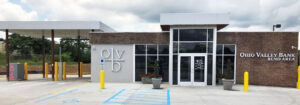Banks are not just financial institutions; they are pillars of communities, fostering trust and stability. As these institutions evolve, they strive to create spaces that reflect their values while offering a welcoming environment for their clients. One way banks can achieve this is by incorporating reclaimed wood ceiling beams into their architectural design. Beyond aesthetics, the choice of reclaimed wood beams carries multiple benefits, from sustainability to creating a unique atmosphere that fosters trust and reliability.
The History and Charm of Reclaimed Wood
Reclaimed wood beams have a story to tell. Each piece carries the history of its previous life, adding character and charm to any space. These beams are salvaged from old buildings, barns, or warehouses, often showcasing natural weathering, knots, and unique grain patterns that cannot be replicated in new wood. When incorporated into a bank’s interior, these elements create an ambiance of heritage and stability, aligning perfectly with the industry’s principles of trust and longevity.
Sustainability at the Forefront
In an era where environmental consciousness is paramount, sustainability is not just a buzzword but a responsibility. Opting for reclaimed wood beams significantly reduces the demand for freshly harvested timber, thereby lessening the environmental impact associated with deforestation. By repurposing existing wood, banks actively contribute to conservation efforts and promote a circular economy, aligning their values with clients who prioritize ethical and sustainable business practices.
Establishing a Unique Identity
Banks often aim to stand out in a competitive market. Incorporating reclaimed wood ceiling beams provides a distinctive aesthetic that sets them apart. Clients entering the bank will immediately notice the warmth and authenticity exuded by these natural elements. This unique identity fosters a sense of belonging and trust among customers, signaling the bank’s commitment to tradition, stability, and reliability.
Psychological Impact on Clients and Employees
The environment in which banking transactions occur significantly impacts clients’ and employees’ experiences. Reclaimed wood beams create a warm and inviting atmosphere that can alleviate the stress often associated with financial matters. The use of natural materials has been linked to reducing anxiety and promoting a sense of calmness, ensuring a more pleasant banking experience for everyone involved.
Durability and Longevity
Apart from their aesthetic appeal, reclaimed wood beams offer exceptional durability. Having stood the test of time in their previous use, these beams often showcase unparalleled resilience. When installed correctly, they become a long-lasting architectural feature, requiring minimal maintenance while retaining their charm for years to come. This durability reflects the bank’s commitment to reliability and steadfastness, traits valued by clients seeking financial stability.
Cost-Effectiveness and Return on Investment
Contrary to common belief, integrating reclaimed wood beams can be a cost-effective choice. While initial costs may vary, the long-term benefits outweigh the investment. Reduced maintenance requirements and the timeless appeal of these beams contribute to a favorable return on investment. Additionally, the unique aesthetic created by reclaimed wood can attract clients seeking a personalized and authentic banking experience, potentially increasing foot traffic and customer retention.
Conclusion
Incorporating reclaimed wood ceiling beams into bank interiors is more than a design choice; it’s a statement—a statement of commitment to sustainability, authenticity, and reliability. These beams not only add visual appeal but also speak volumes about the bank’s values and dedication to creating an inviting space for clients and employees alike. As financial institutions continue to evolve, the adoption of reclaimed wood beams stands as a testament to their harmonious blend of tradition, sustainability, and innovation.
Embracing the timeless allure of reclaimed wood beams isn’t just about revamping interiors; it’s about building an enduring legacy, one that resonates with clients on a deeper level, fostering trust and forging lasting relationships.
Let us continue to build bridges between heritage and innovation, incorporating sustainable design choices that speak volumes about our values and aspirations for a better, more responsible future.











